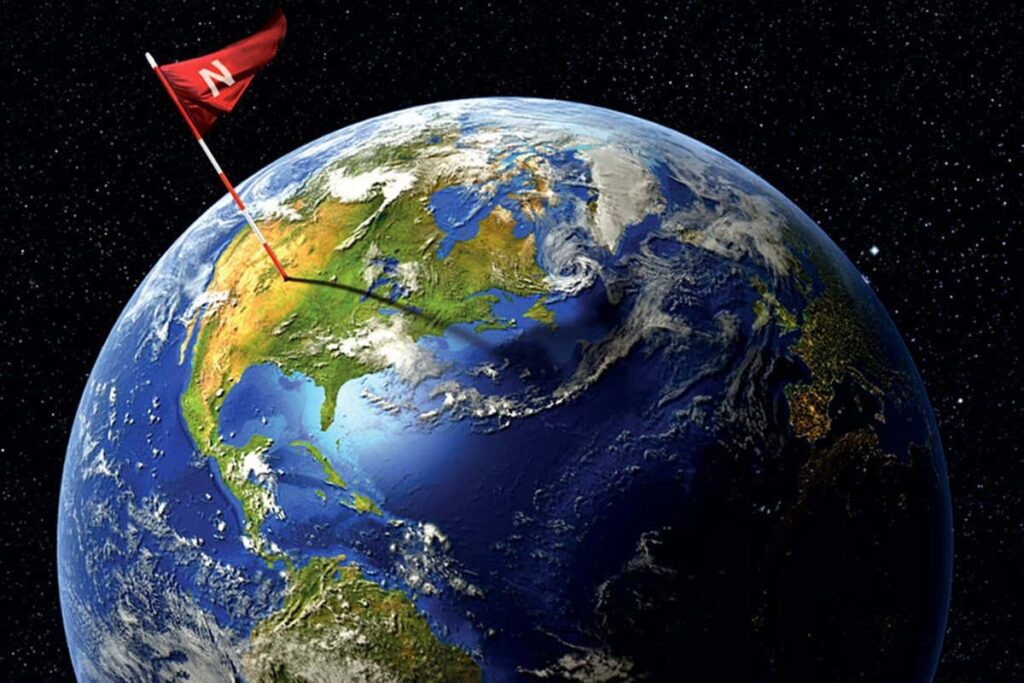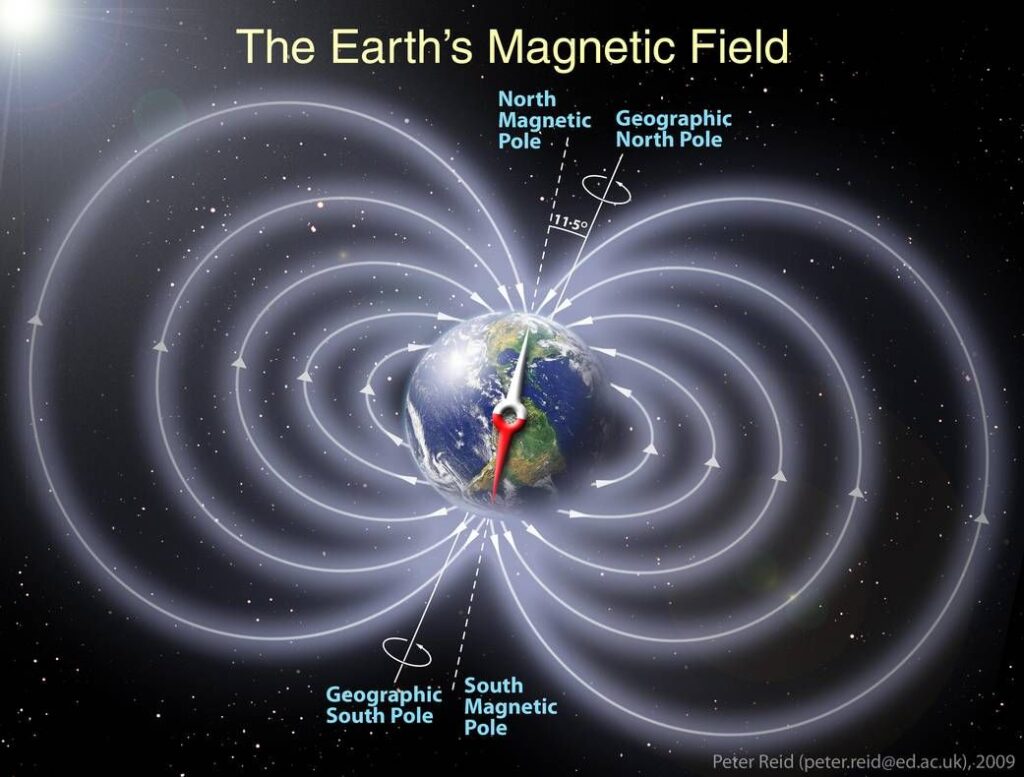
The Earth’s magnetic poles are in a constant state of motion, and the movement of the North Pole, in particular, has fascinated scientists for years. Unlike the geographic North Pole, which remains relatively stable, the magnetic North Pole wanders and shifts its position over time. This phenomenon has intrigued researchers and prompted investigations into the causes and implications of this magnetic migration.

To understand why the North Pole moves, we must first grasp the concept of Earth’s magnetic field. The planet generates a magnetic field due to the convection and currents within its outer core. This process occurs because the Earth’s inner core, composed primarily of solid iron, spins at a different rate from the molten outer core. The resulting dynamo effect creates a massive electromagnetic field, extending far into space and influencing compasses and other magnetic instruments on Earth’s surface.
The interplay between the convection currents in the outer core and the spinning of the inner core affects the Earth’s magnetic field. However, the exact mechanisms and processes behind these changes remain largely unknown. Scientists hypothesize that fluctuations in the core’s spin rate and alterations in the currents within the molten material contribute to the shifting magnetic field and the movement of the poles.

The magnetic North Pole, in particular, undergoes a fascinating journey characterized by loops. It can move up to 80 kilometers per day, following these looping patterns. However, when we consider the average of these loops, we find that the pole’s overall location also shifts by approximately 40 kilometers per year. Over the past 150 years, the magnetic North Pole has wandered a total distance of about 1,102 kilometers.
It’s important to note that the magnetic South Pole experiences similar movements, although its behavior is not as extensively studied as that of the North Pole. Additionally, the Earth’s magnetic field has the capability to reverse completely, causing the magnetic poles to switch places. By studying rock formations on the ocean floor that preserve traces of the Earth’s magnetic field, scientists can determine when these pole reversals occurred. The last magnetic pole reversal occurred around 780,000 years ago, and such events have transpired approximately 400 times over the past 330 million years. It takes roughly a thousand years for a pole reversal to complete, with the equator experiencing a slower transition compared to the poles.

As scientists continue to investigate these magnetic phenomena, they have observed that the Earth’s magnetic field has weakened by approximately 10% over the last 150 years. Some researchers interpret this weakening as a potential sign of an ongoing magnetic pole reversal. However, the exact implications and consequences of such an event remain a topic of ongoing research and debate.
In addition to the inner workings of the Earth’s core, other factors can influence the magnetic field. Irregularities at the boundary between the core and mantle and changes to the Earth’s crust, such as major earthquakes, can impact the magnetic field’s behavior. These external factors contribute to the complexity of understanding the Earth’s magnetic field and the movement of its poles.

In conclusion, the movement of the Earth’s magnetic poles, including the magnetic North Pole, arises from the intricate interplay between the convection currents in the outer core and the spinning of the inner core. These processes generate the Earth’s magnetic field, which is responsible for the pole’s shifting position. While scientists have made significant progress in unraveling the mechanisms behind these magnetic phenomena, many aspects remain elusive. Continued research into the Earth’s core dynamics and its influence on the magnetic field will enhance our understanding of this intriguing natural phenomenon.

Leave a Reply